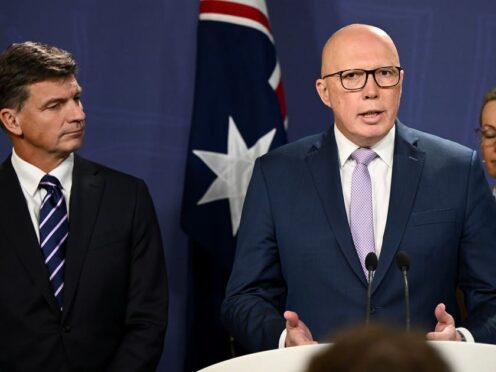Australia’s opposition party on Wednesday announced plans to build the nation’s first nuclear power plants as early as 2035.
The party argued the government’s policies for decarbonising the economy with renewable energy sources, including solar, wind turbines, and green hydrogen, would not work.
The policy announcement ensures the major parties will be divided on how Australia will curb its greenhouse gas emissions at elections due within a year. The parties have not gone to an election with the same carbon reduction policies since 2007.
“I’m very happy for the election to be a referendum on energy, on nuclear, on power prices, on lights going out, on who has a sustainable pathway for our country going forward,” Liberal Party leader Peter Dutton told reporters.

Seven government-owned reactors would be built on the sites of ageing coal-fired electricity plants in five of Australia’s six states, Mr Dutton said.
The first two would be built from 2035 to 2037 and the last in the 2040s. The estimated costs would be announced at a later date, he said.
The current centre-left government has rejected nuclear power generation in Australia as too expensive. Too many coal-fired generators would have been decommissioned before nuclear power could fill the gap.
Climate change and energy minister Chris Bowen accused the Liberal Party of serving Australia’s coal and gas industry lobbies.
“It’s not really an announcement. We know that Mr Dutton wants to slow down the rollout of renewables and he wants to introduce the most expensive form of energy that’s slow to build,” Mr Bowen told reporters.
“But today, we’ve seen no costs, we’ve seen no gigawatts, we’ve seen no detail. This is a joke. It’s a serious joke because it threatens our transition” from fossil fuels,” Mr Bowen added.
Mr Bowen’s Labor Party came to power in the 2022 elections, promising deeper cuts to Australia’s greenhouse gas emissions by 2030 than the previous coalition government had committed to.
The previous Liberal Party-led government promised to reduce emissions by between 26% and 28% below 2005 levels by the end of the decade.
Labor promised a 43% reduction, and the Parliament enshrined that target in law, creating difficulties for any future government that wanted to reduce it and offering certainty for investors.
Mr Dutton has ruled out announcing a new 2030 target before the next election. However, the major parties have agreed on a net-zero emissions target by 2050.
Mr Dutton said Labor could not reach its 2030 target with a policy toward relying solely on renewable energy.
A Liberal Party-led government would use nuclear power, renewable energy sources and “significant amounts of gas”, Mr Dutton said.
“I want to make sure that the Australian public understands today that we have a vision for our country to deliver cleaner electricity, cheaper electricity and consistent electricity,” he added.
Australia has historically been one of the world’s worst greenhouse gas emitters on a per capita basis because of its heavy reliance on abundant reserves of cheap coal and gas.
The constant conflict between the major parties over the past 17 years on how to reduce emissions led to a carbon tax introduced by a Labor Party government in 2012 being repealed by a Liberal Party-led government in 2014.
Australia’s only reactor has produced nuclear isotopes for medical use in the Sydney suburb of Lucas Heights since 1958.
Mr Dutton said the country could only now consider introducing atomic power generation because the major parties had agreed in 2019 to the AUKUS partnership with the United States and Britain, which will deliver Australia a fleet of submarines powered by US nuclear technology.
